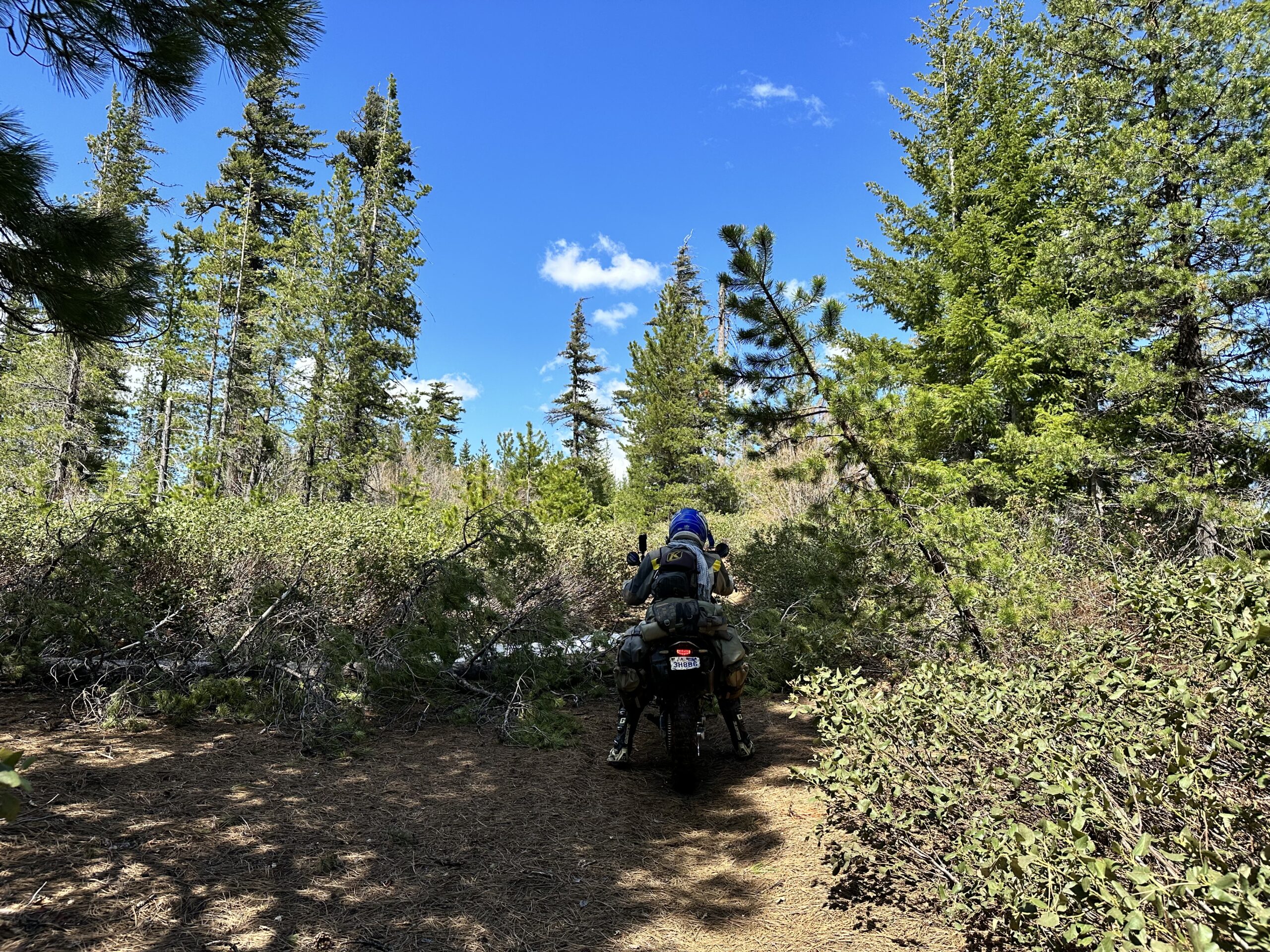The morning of our departure from Bend started with a smoke alarm blaring because we burned some butter in the kitchen. Nobody died, so it was all fine. We packed up and headed north, passing through a cute touristy town of Sisters, and then heading into the forest from there.
The going was good. As we climbed up the mountains, we had amazing vistas over the surrounding landscape. It was bittersweet because the reason our views were unimpeded was a fire a few seasons ago that left most of the trees around the trail burned and bare. We were mildly concerned about the snow. As the elevation reached 5000 ft near Cache Mountain, we stumbled into a little bit of it, but managed to get through without much trouble.
After descending, we faced a different kind of obstacle – water. Not muddy, but just wet. The flooded sections among the trees reminded me of the beaver dams occasionally taking over trails in Ontario. The water was shallow enough and the ground sturdy enough that with a little planning, it did not lead to any complications.
And then there were trees. First we had to hop over a tree that blocked the trail. It was perhaps half a meter off the ground, and to make it easier, we added a few logs in front of it, to create a make shift ramp. Then just a little later, another tree. Then another. Then we got to a point where you can see a series of them lined up and not a single sign than anyone passed there this year. We turned around and found an alternative exit that just lead us to a larger track and allowed us to rejoin a paved road. One magic phrase uttered was “I think it’s time for lunch”.
Following our late lunch (in an isolated pizza joint perched between a highway and a river), we still had the daylight and energy to continue on. To keep it easy, we considered sticking to paved roads. Little did we know that in this area, lots of paved forest roads aren’t maintained in the winter either. We went back and forth along several different routes, attempted to re-join the BDR and link up forest roads, but had to turn back again and again due to either deep snow or excessive fallen trees. Going off trail to avoid these obstacles wasn’t practical since the forest was quite dense and off trail the amount of deadwood was even greater. Finally, with light running out we found the perfect solution to our predicament: pitched our tent in an empty campground next to a roaring creek. We got a fire going, and enjoyed it for what it was – a beautiful evening in the mountains.











